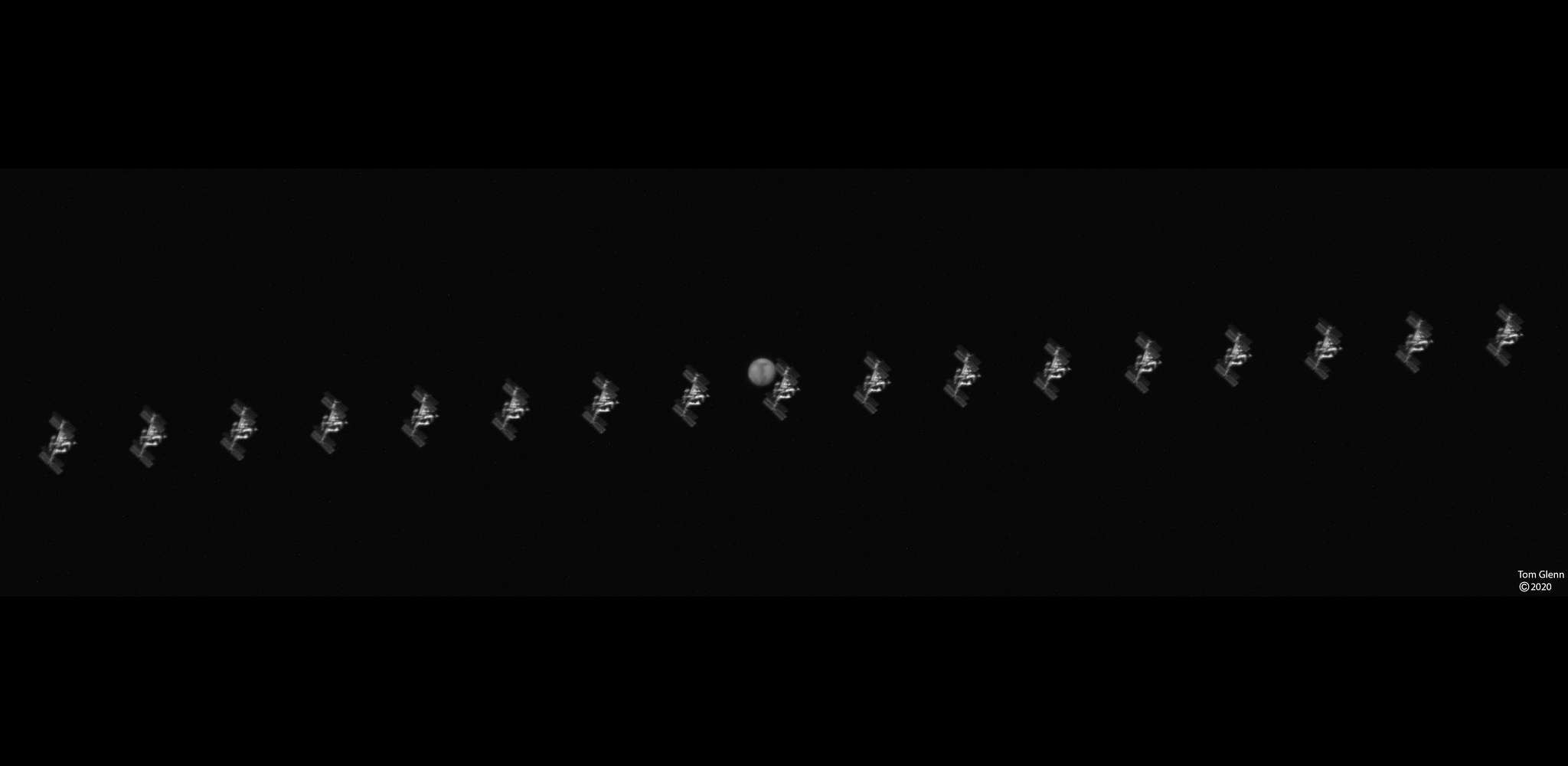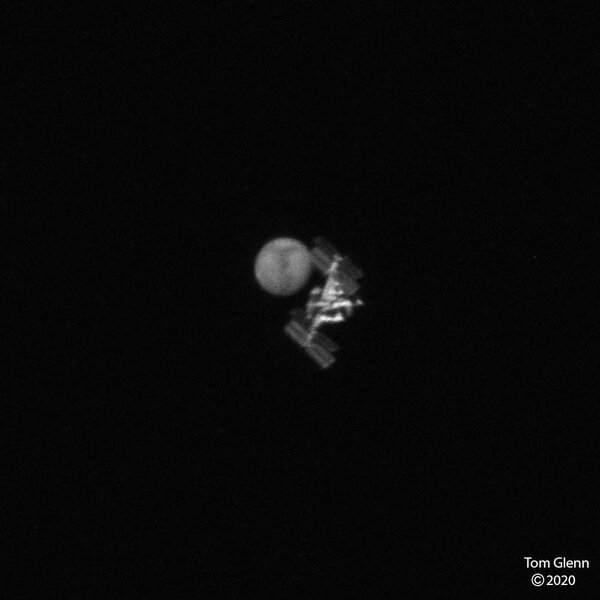Create a free profile to get unlimited access to exclusive videos, sweepstakes, and more!
Incredible video: The International Space Station transits Mars!

Going outside to gaze at the stars is a lot of fun, even if you're a beginner. If you have some experience you can identify constellations, planets, individual stars, and more.
One thing I love is a surprise: The flash of a meteor zipping across the sky, or happening to see a faint satellite moving amongst the stars.
Satellites are predictable, though. The science of orbital mechanics means being able to convert the physical parameters of an orbit (the radius, period, ellipticity, and so on) into coordinates on the sky for a given time. There are plenty of apps out there that do this for you; put in your position on the Earth and a time, and it will tell you what satellites are up and when.
Research scientist and amateur astronomer Thomas Glenn did this recently, but he was trying to do more than just spot a satellite: He wanted to capture the International Space Station (ISS) passing directly in front of Mars!
This is called a transit. Seeing the ISS pass in front of the Moon or Sun is hard enough, and they're 100 times wider than Mars. That means the path on the ground where the ISS and Mars lined up was extremely narrow, just 90 meters wide. Still, Glenn put in the work, set up his equipment in San Diego, and when it happened, well. He got this:
Holy wow! The transit only lasts a fraction of a second — the ISS orbits the Earth at nearly 8 kilometers per second, so it's moving — so he used a video camera to take many frames per second to make sure he got the shot. That image is a composite of several video frames, each just 0.35 milliseconds in duration. As you can see, in the center shot, the edge of a solar panel just nicks Mars, so this image counts as a getting transit (and, as you can see from the ISS motion, it did indeed pass right in front of Mars from his location).
He made a video showing the transit in real time, as well as slowed down so you can see the orbital action:
On the Cloudy Nights forum for amateur astronomers, Glenn describes his adventures getting this shot, including using the software calsky to get the ground track for the ISS. This was a nail biter: The ISS was in Earth's shadow (so it was invisible, since the Sun wasn't shining on it) until less than a minute before the transit, and he couldn't even be sure he was in the right place until the actual event occurred!
He used off-the-shelf equipment; a Celestron C9.25 Edge HD 'scope* and a ZWO ASI183mm monochrome videocamera (monochrome means no color information is captured). In this single frame you can easily see some features on the surface of Mars, including the big dark patch of Syrtis Major, a plain of volcanic basaltic rock (which is why it's darker), as well as detail on the space station — the very fast frame exposure freezes out atmopsheric blurring so that you can actually see the solar panels and modules:
This was an incredibly difficult observation, and he nailed it. Remember, had he moved 50 meters north he would've missed it. That's due to parallax; basically the change in the apparent position of the ISS with a change in Glenn's position on Earth (I talk a bit more about parallax in Crash Course Astronomy: Distances). It's like seeing a nearby tree apparently in front of a distant building, then walking a short distance such that the tree no longer blocks the building. But in this case the building (Mars) was 67 million kilometers away, while the tree (ISS) was several hundred kilometers away and also moving at 27,000 kph. So, yeah. Wow.
Glenn just started an Instagram feed, and he has some great images he's taken on his Flickr page (including quite a few of the Moon). I'm impressed. He's good. And note that while he has a PhD from Stanford in developmental biology, he calls himself an amateur astronomer. When I'm out with my own 'scope I think of myself the same way. He's operating at a bit of a higher level than I do, though.
It's been a while since I've taken my own 'scope out (wildfire smoke and mosquitos have made that difficult (though I ventured out to see the comet NEOWISE) and this inspires me to get out again. As I mentioned recently, Jupiter is perfect for observing right now, along with Mars, Saturn, Uranus, and Neptune! Next clear night, I guess you'll know where I'll be.
Tip o' the dew shield to BosPlanet on IG.
*Disclosure: Celestron sponsors my Science Getaways vacation company; I link to them as a courtesy as I usually do when I mention astronomical equipment no matter what company sells it.




























